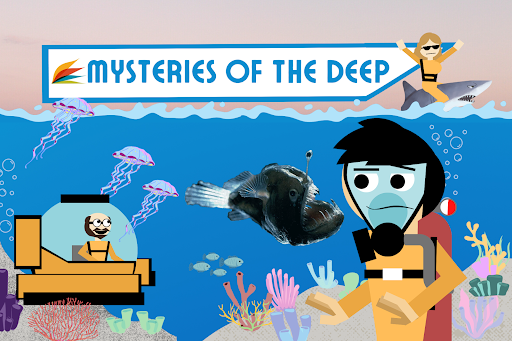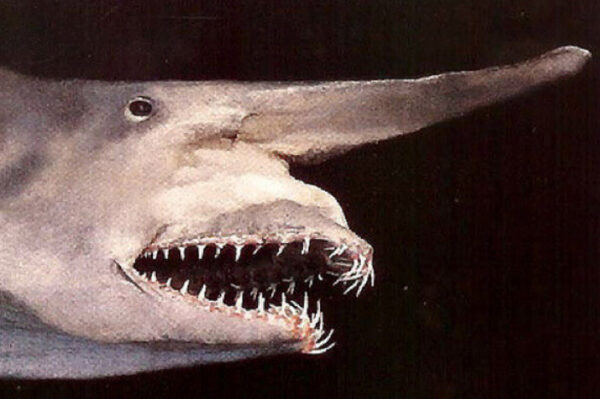
When you go to the beach, have you ever looked down at the water and wondered “what’s down there?” The ocean is huge. As in MASSIVELY HUGE. According to the Intergovernmental Oceanographic Commission of the United Nations Educational, Scientific, and Cultural Organization (UNESCO), only 5% of the ocean has been explored and charted by humans.
Last time, we discussed the Fangtooth Fish and the Yeti Crab, but there are so many amazing, weird, and downright frightening animals in the ocean left to talk about.
The scariest thing about the ocean is not knowing what’s hiding in it. Hopefully, the things you learn in this series will hopefully shine some light the abyss and help you be a little less scared of the mysterious, briny deep.
…or will it?
The Goblin Shark

Ah, the Goblin Shark. Friendly? No. Frightening? Yes. This long-snouted creature lives around 1,200 meters in the ocean. It is spread out all over the world, found in many areas of the Pacific, Atlantic, and Indian Oceans. While looks may not be its strong suit, it has a lot of adaptations that make it a fierce hunter of the deep.
Here are three facts about it:
The Blobfish

Do you remember that picture of the sad-looking, pink blob that circulated on the internet some time ago? Well, that is a blobfish. Unfortunately, that picture is not what a blobfish looks like. The image that you may have seen is actually the fish outside of its natural habitat. Found between 600 and 1,200 meters in the ocean, this animal is anything but a sad, squishy fishy.
Here are three facts about these adorable deep-sea dwellers:
See? Those animals weren’t so bad right? If your interested in learning more about these sea creatures (and other animals you may be curious about), visit the library and check out some books from our non-fiction section! Then, check out our Gale Online Database where you can learn even more. We’re sure you won’t be blobfish-ing around trying to find something fun to do at CCPL!
Stay tuned next time for the next two animals in the series!





